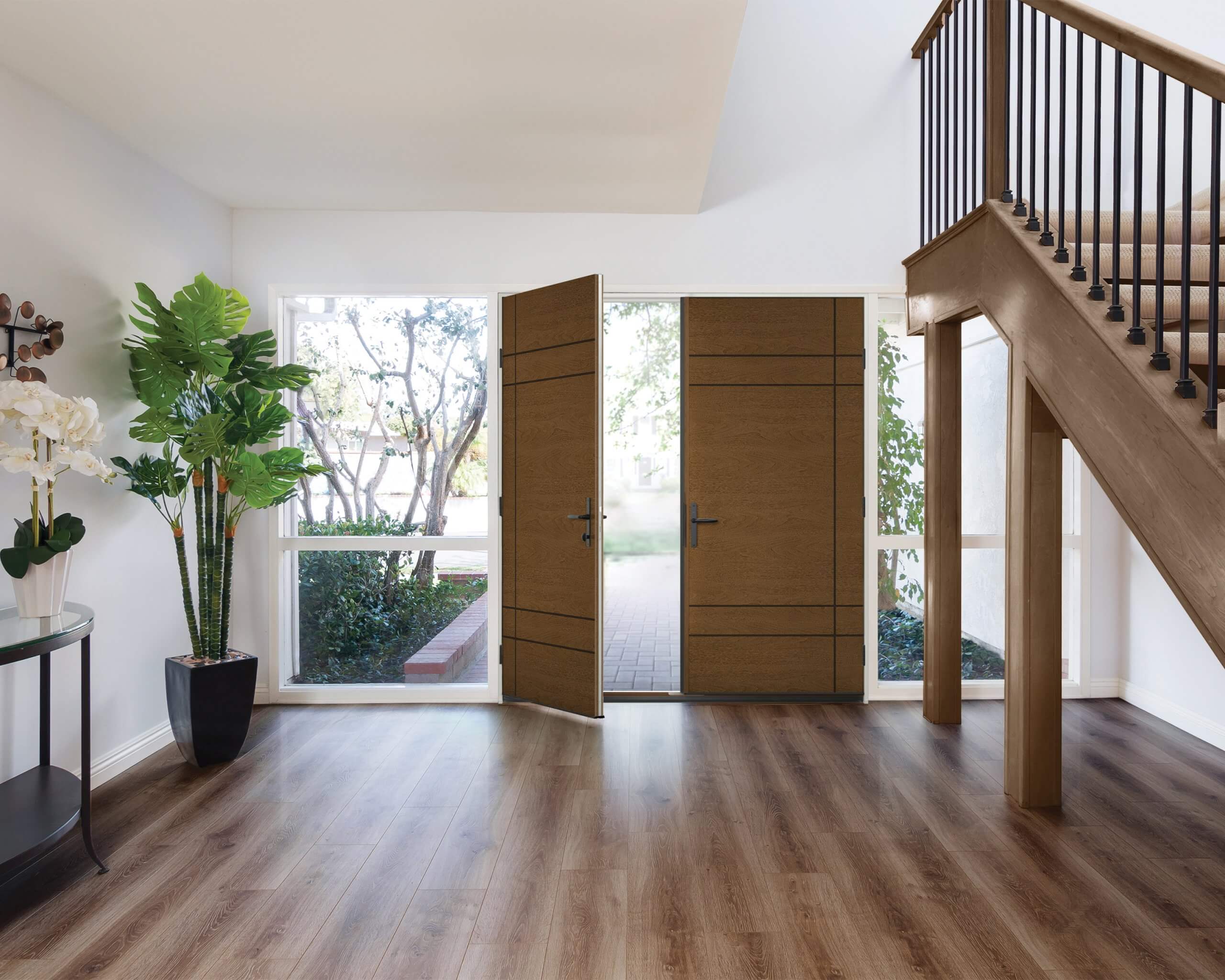Like most building categories, the last few years for the windows and doors market have seen their fair share of challenges and opportunities.
Coming out of the steady supply issues spurred by the pandemic, with the market experiencing a national shortage of affordable housing, demand has returned to normal seasonal patterns, says John Arsenault, Director of National Accounts/Atlantic Sales for Kohltech Windows and Entrance Systems.
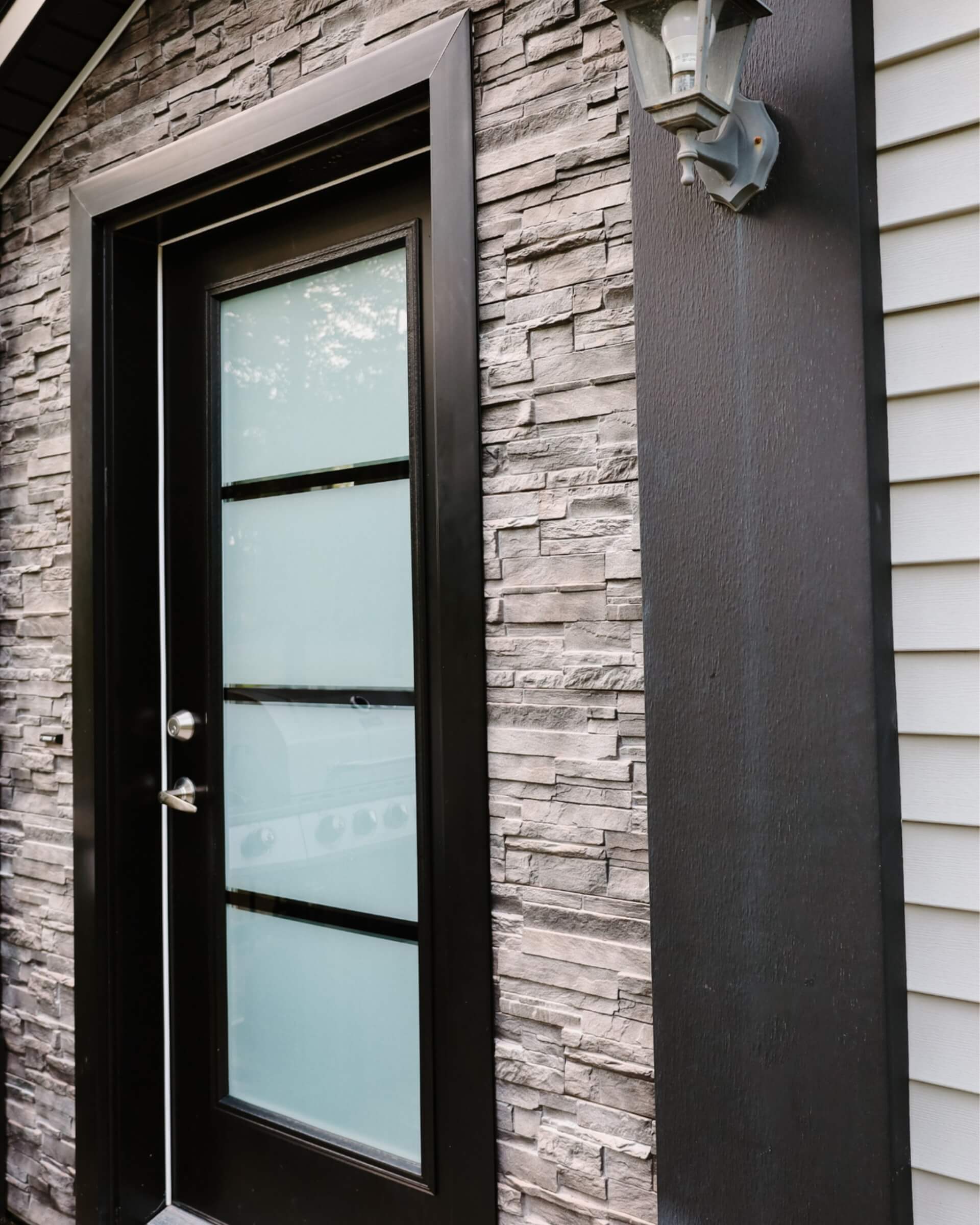
Photo courtesy of Kohltech
The good news is that the window and door industry is better able to meet supply than it was in recent years. “Land and labour supply are more pressing than material supply,” Arsenault notes of the challenges to meeting housing demands.
“Windows and exterior door trends in 2024 include increased demand for energy-efficient options, smart technology integration, and sustainable materials,” says Alyssa DeCola, Strategic Account Manager at Frank (formerly Ostaco Windows & Doors). “Past trends like large glass panels and minimalistic designs continue to grow. Traditional styles and designs are shrinking in popularity.”
Rising inflation and mortgage rates, without seeing a softening of home prices, are leading many homeowners to rethink moving from their existing abodes, which in turn is expected by some vendors to drive more renovations.
“It makes a lot more sense to stay, and if they are going to stay, they’re saying, ‘Let’s refresh. Let’s get a fresher aesthetic,’” says James McKay, Senior Product Manager for Windows and Doors at JELD-WEN of Canada.
Along with an aesthetic refresh of windows and doors, comes the opportunity to gain energy efficiency and the cost benefits that doing it brings. McKay says this is “absolutely” good news for installers and contractors. “It just means your new construction has become a renovation.”
“There’s a different field you’re playing on, but the game is the same.”
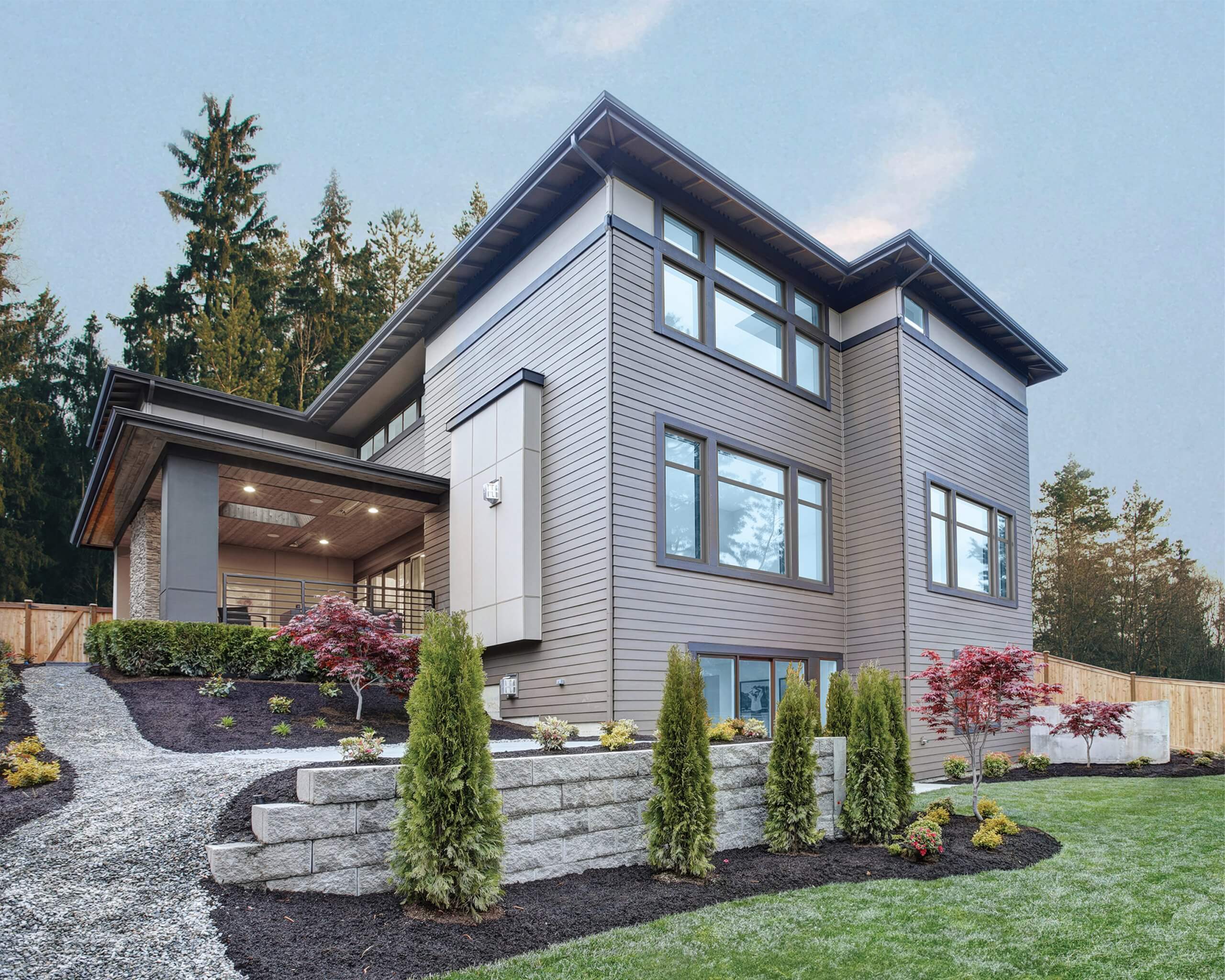
Photo courtesy of JELD-WEN
First things first: the front door
Many see the front door as the first impression a guest has of the home, and as such homeowners often put more attention on its aesthetics than they do other exterior fenestration. After all, as the adage goes: You never get a second chance to make a first impression.
“When you’re looking at a complete window and door package, obviously, the front door as the opening place into your home is what people look at, and they are looking to spend more money there,” says Jeff Ward, Director of Business Development – Fiberglass at Durabuilt Windows & Doors.
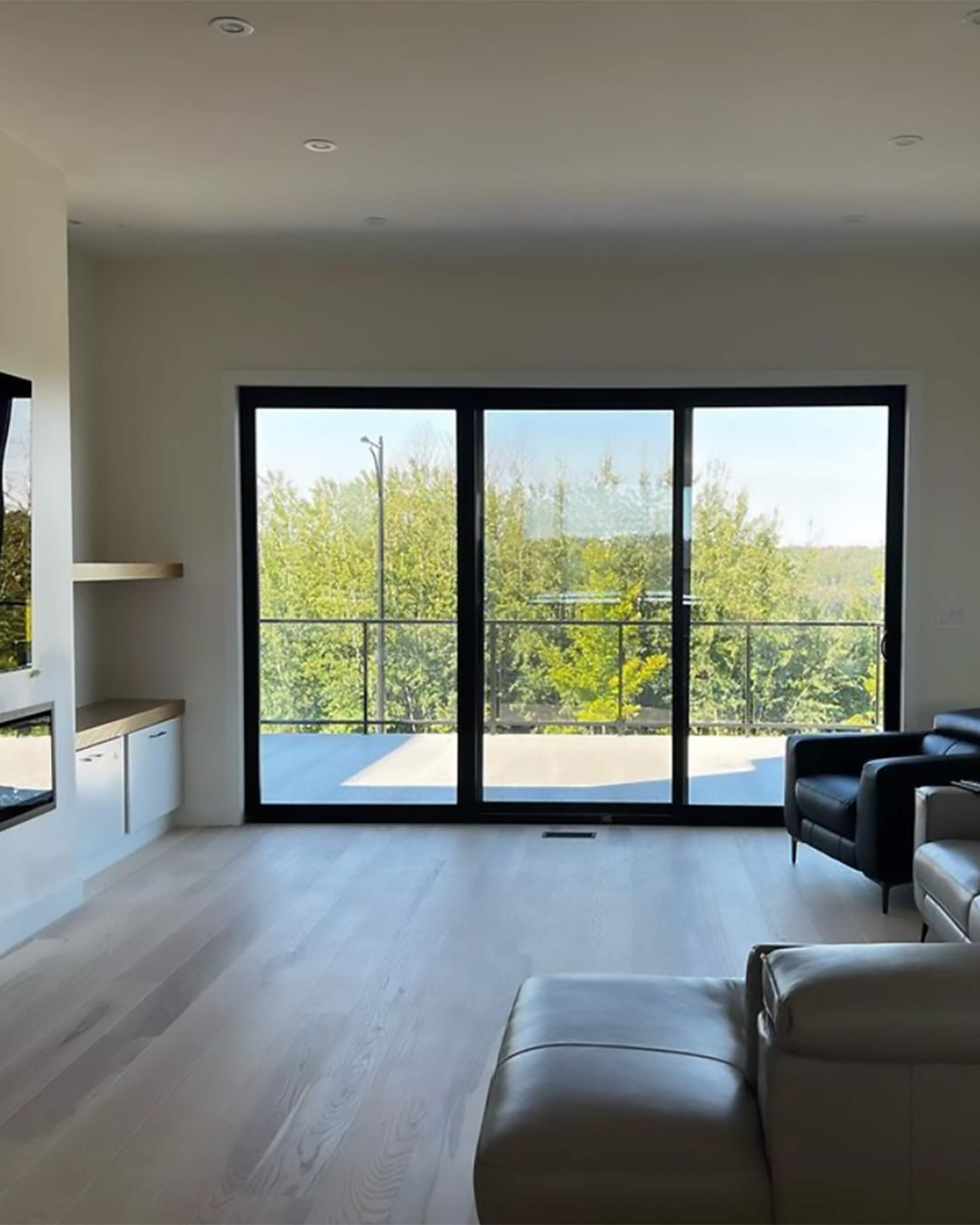
Photo courtesy of Durabuilt
Kate Lindsay, Sales and Business Development Manager for Ply Gem Canada adds, “Homeowners are increasingly utilizing their entry doors as a canvas for self-expression, and similar to the trend we’re seeing with the design flexibility of our windows, homeowners are also opting to add a splash of colour —in some cases bright blues, eye-catching oranges and even shades of pink— on the focal point of their home, the entryway.”
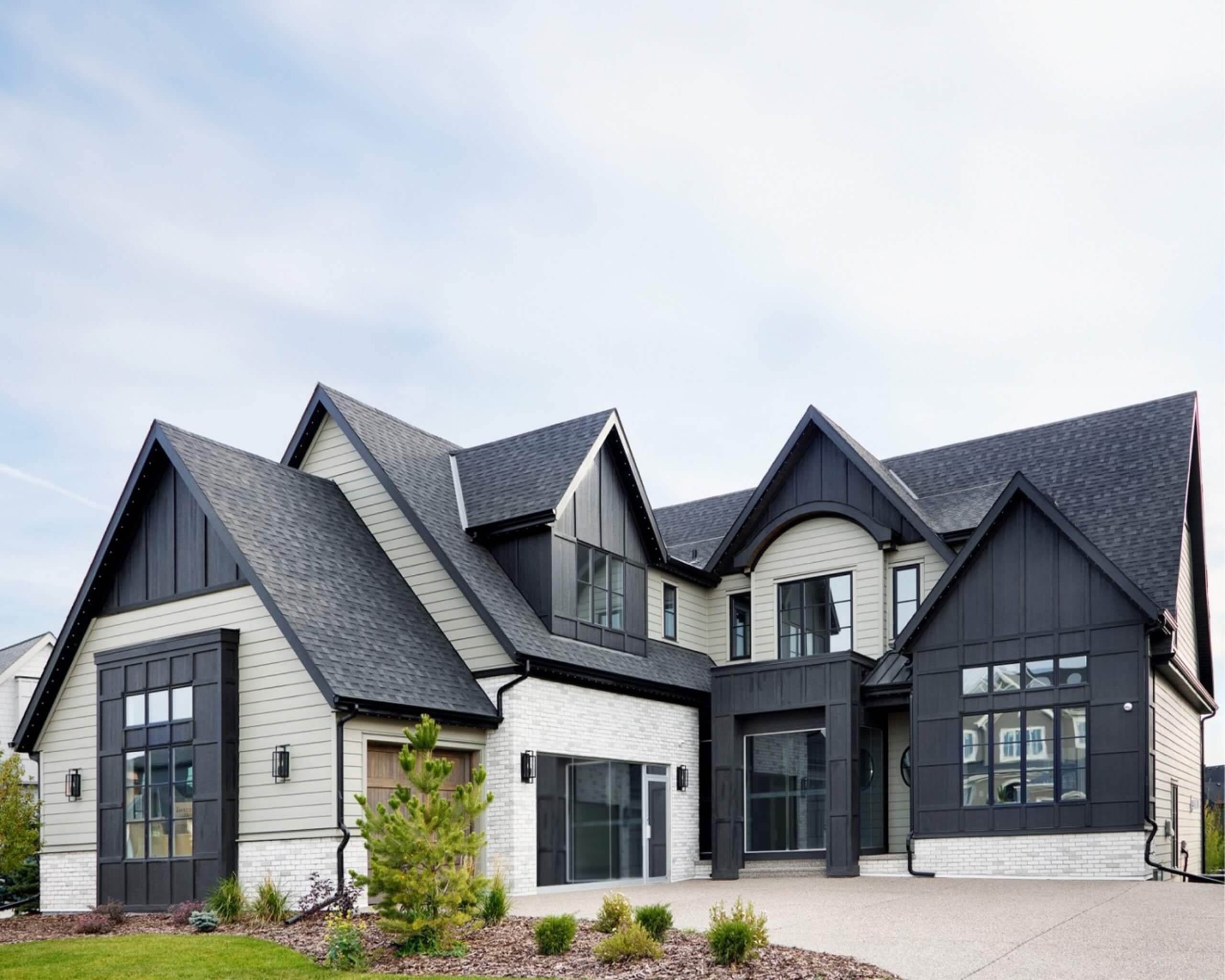
Photo courtesy of Ply Gem
Many of the major trends in fenestration products are ones the industry has seen in recent years, suggests Arsenault.
He says trends driving up the size of doors (to 8’) continue, and adds that in the exterior door space, “stained glass has moderated as customers continue to look for ways to personalize their front door with a wide variety of colours.”
“Lite kits,” he adds, “are less ornate and trend towards a contemporary look with straight lines.”
Kris Kowal, Business Development Manager for Exteriors at Alliance Door Products echoes the sentiment that builders continue to say “bigger is better” when it comes to front door designs. “Bigger, more grand openings are absolutely on trend,” he says. With that in mind, he notes that 42” wide by 8’ tall doors are not uncommon, as well as ones featuring more glass.
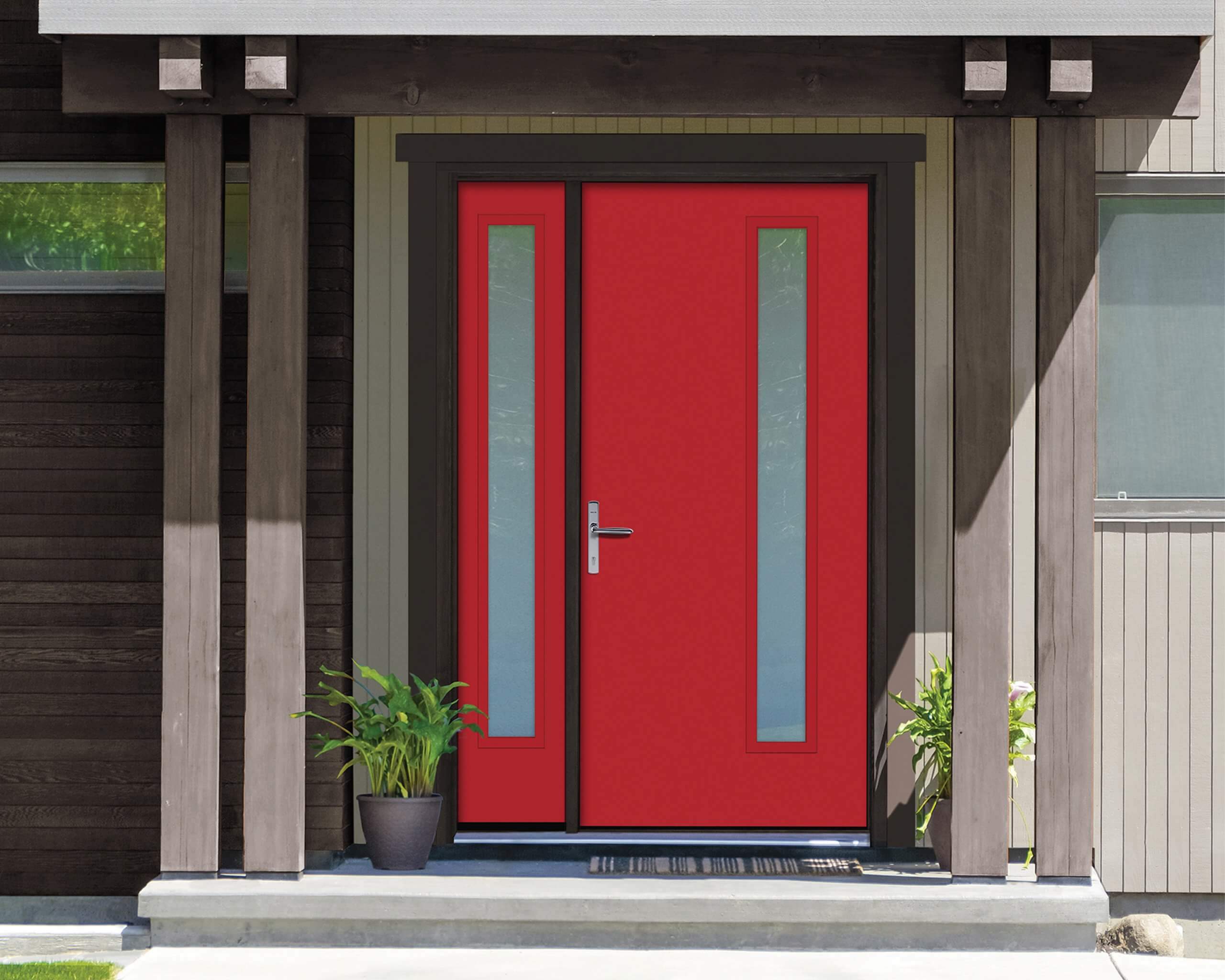
Photo courtesy of Alliance Door Products
However, he also points out that this trend of larger entryways with more glass runs counter to energy efficiency efforts. As such, manufacturers have rolled up their sleeves to find ways to give consumers the look they desire with meeting code requirements.
Solid panel doors with side-lites or transom above the door are becoming popular options, accompanied by triple-glazed, Low-E glass, to provide the natural light householders are seeking while continuing to meet energy efficiency standards and initiatives.
Ward says that the front (and back doors) are areas where homeowners are increasingly likely to request something unique and that contractors need to be open-minded and explore different options than in the past.
For their part, manufacturers, like Durabuilt, are striving to add more value to their offerings. “We feel the customer is looking for a little bit more in what they are expecting,” Ward says.
In doors and windows, size matters. And some builders and homeowners are expecting nothing short of grandeur when it comes to entryways — with an emphasis on the grand. Ward points to new construction door installs of its new fibreglass entryway solutions that boast 5’ x 10’ slabs that operate on a pivot rather than a hinge. Of course, such a system is no small expense and could cost builders around $30,000.
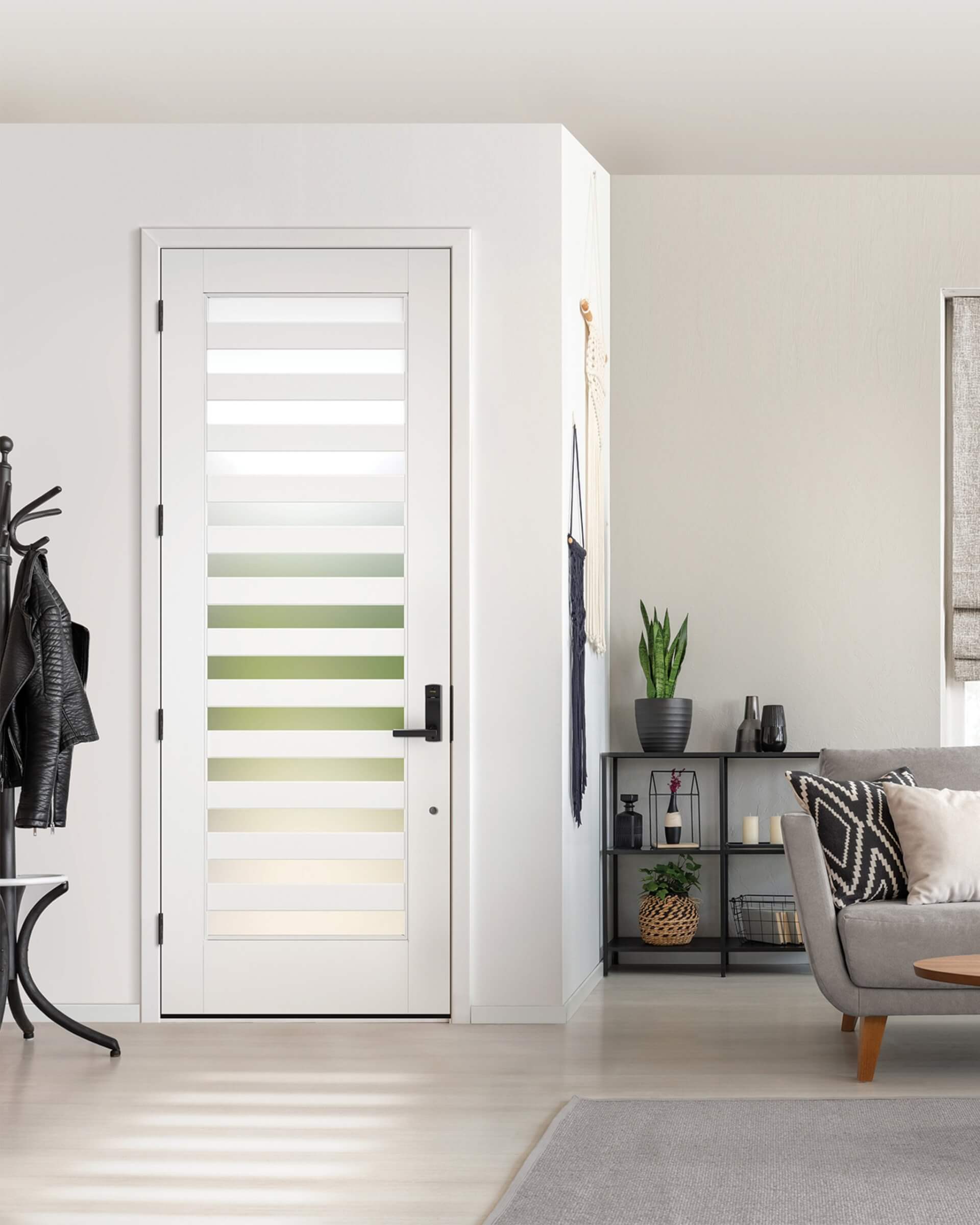
Photo courtesy of Alliance Door Products
Energy efficiency requirements aren’t the only way manufacturers are working to help contractors. Digital tools are increasingly being provided to help find the right design aesthetic for homeowners while taking away any guesswork around performance or installation.
“Modern problems have modern solutions,” says Kowal, whose company provides contractors with access to such a digital tool. “Yes, energy is a challenge for contractors to understand; however, there are software and website platforms to help.”
“There’s a lot that contractors are expected to remember on the site. Working well with their vendors and leaning into these programs take a lot of the memorization work off the contractor.”
Another way manufacturers have been helping contractors solve a real problem is around the challenge of finishing. Kowal notes that 65% of all doors are finished with paint, and 48% of those doors are painted white. “Finding more complete, ready-to-install products is helping overcome the skills and labour shortage around quality finishers.”
Clarence Kent, president of Kento Windows & Doors says he sees the same challenge to find skilled labour in his home province of Newfoundland. “Everyone is fighting for the same skilled tradespeople. Such a shortage is increasing the demand for pre-finished products.”
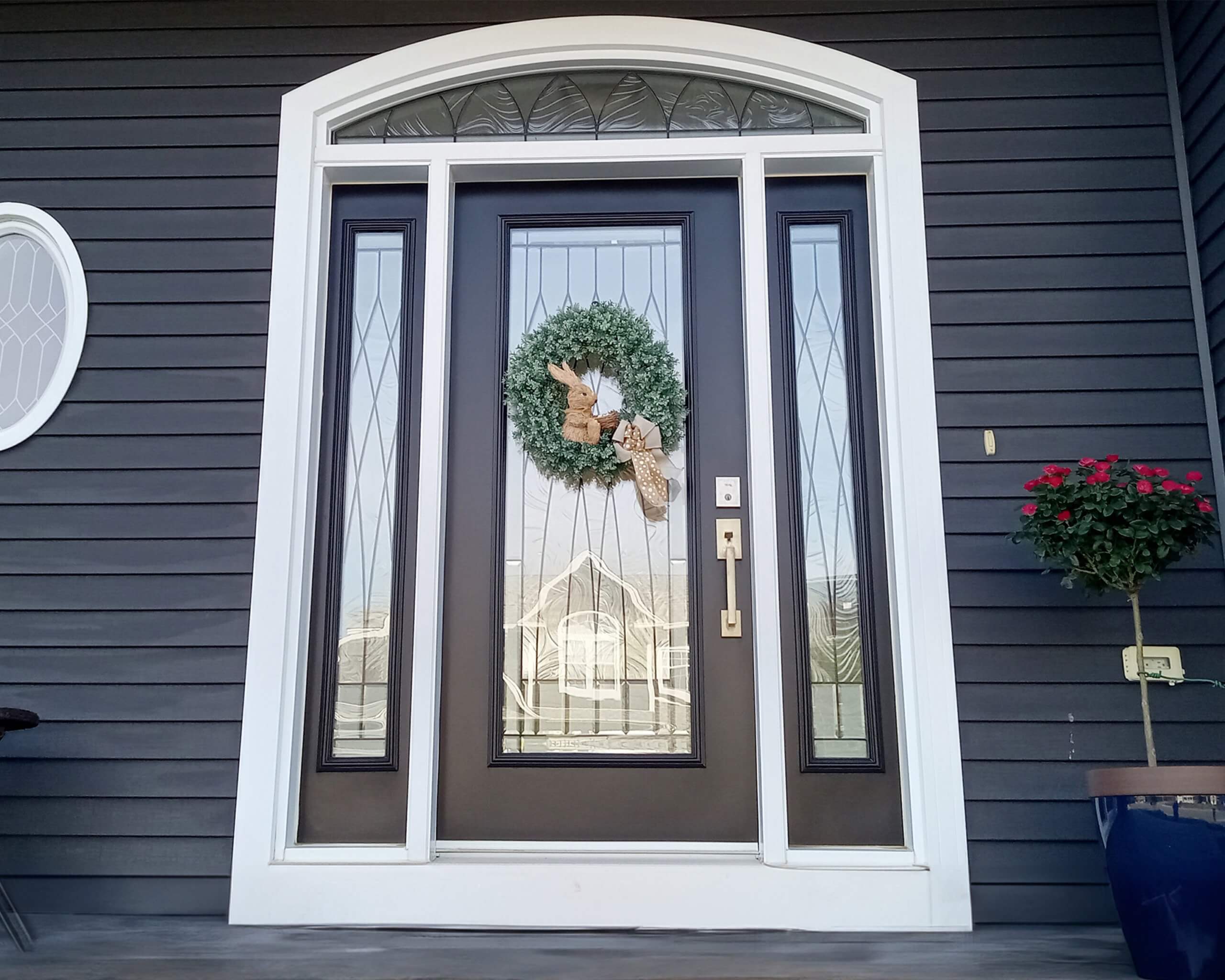
Photo courtesy of Kento
Windows of opportunity
While she notes it’s still too early to tell what trends will emerge in 2024, Tracy Nadiger, Vice President of Marketing at All Weather Windows does see a few ongoing.
“Black is still the number one colour by far, and will continue to be,” she notes. “Bigger windows are still trending. Both trends have been true for a few years now.”
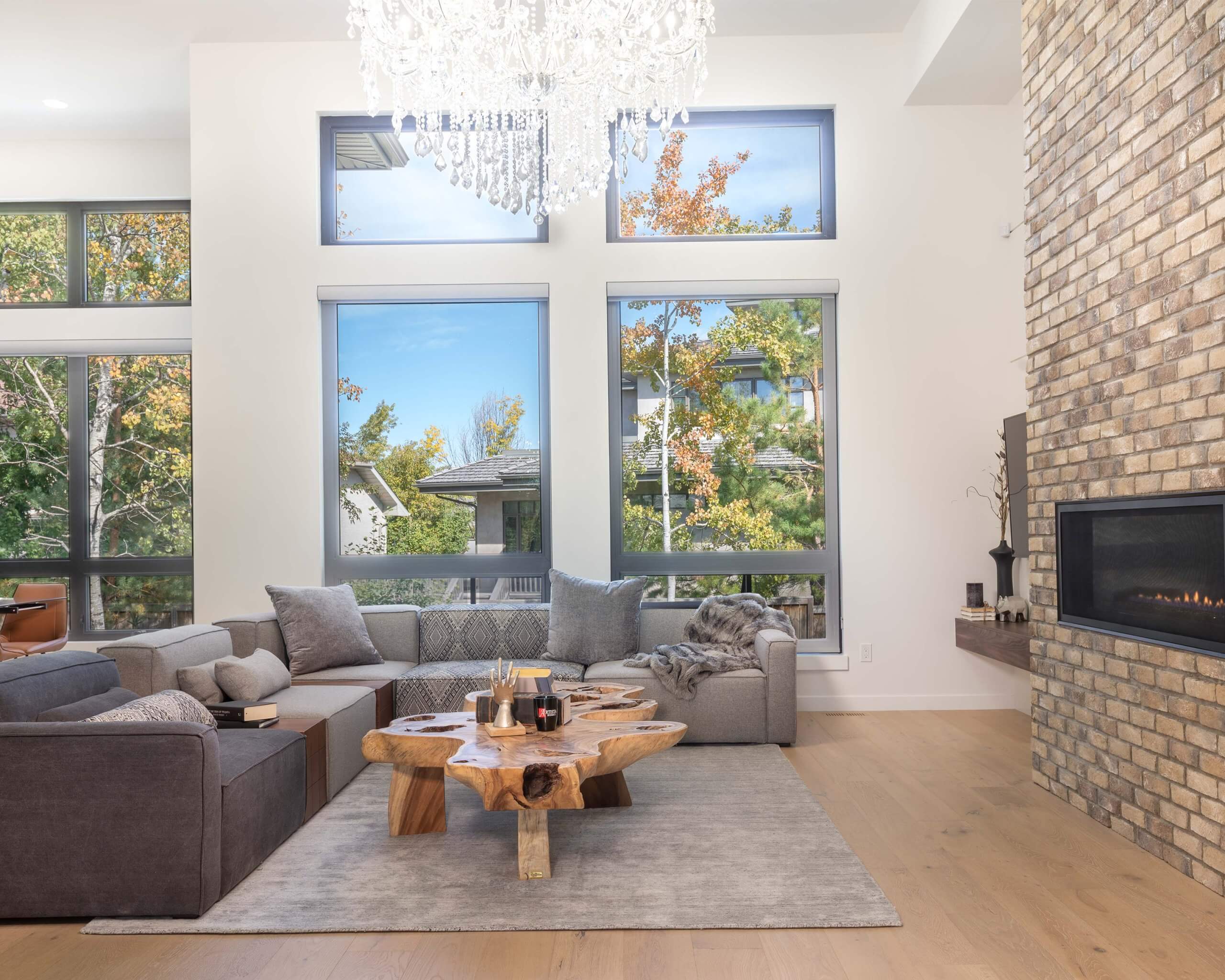
Photo courtesy of All Weather Windows
Sidebar: Is black back?
As window colours go, black is back in full force — in fact, the popularity it’s had in recent years hasn’t abated much.
As fashion cycles go, some expected the popularity of black windows to drop, but it appears to be going strong. McKay says that “black continues to grow in popularity from a window frame perspective, with a lot more dark frames on lighter treated homes to help give contrast.”
“It should be tapering off, but it is growing in popularity.”
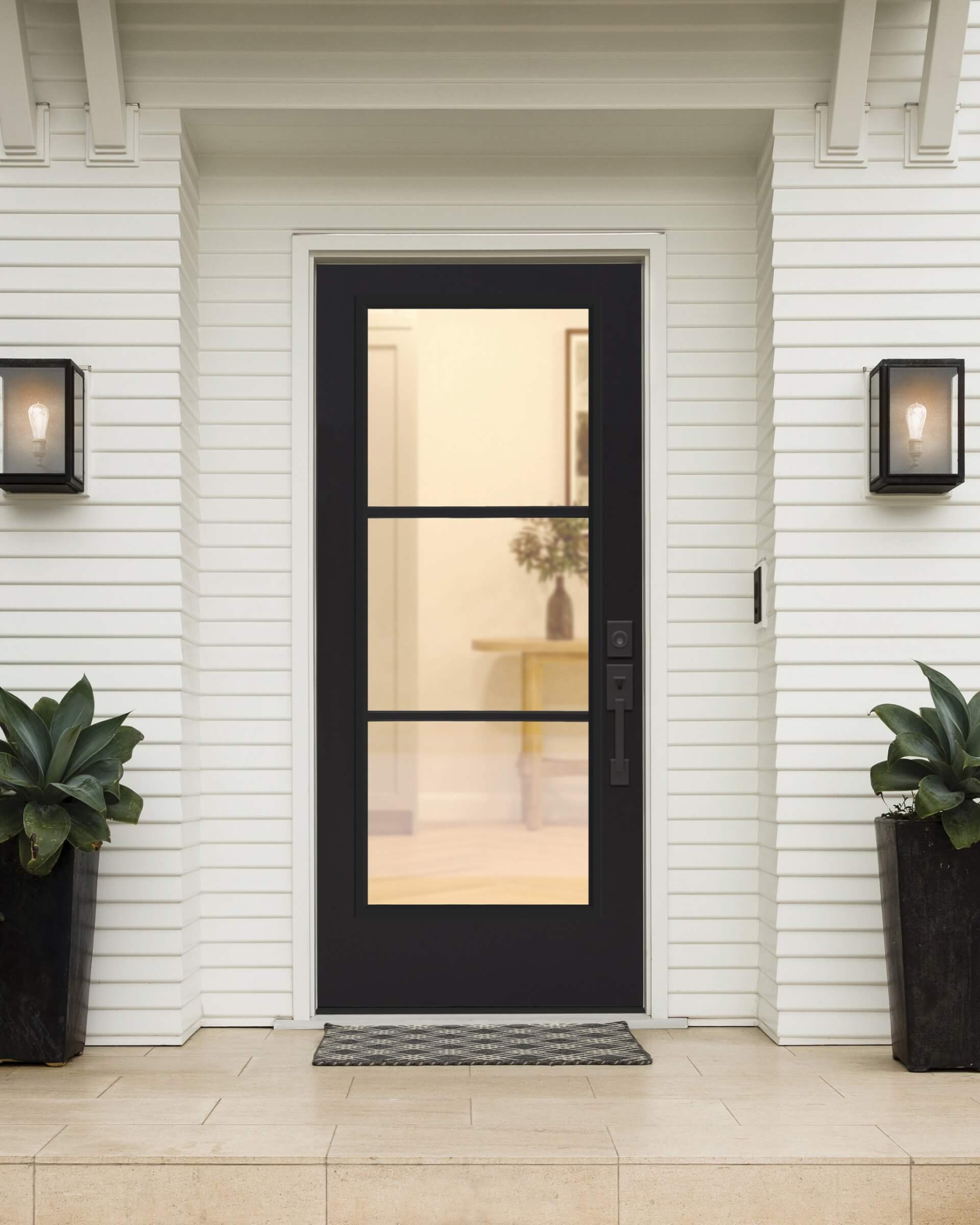
Photo courtesy of JELD-WEN
Regionally, the popularity of black windows — and doors — appears to remain high. In Newfoundland and Labrador, Kent says pre-painted black windows and doors are the majority of products. This has led Kento to begin a program to increase its stock of pre-finished black systems.
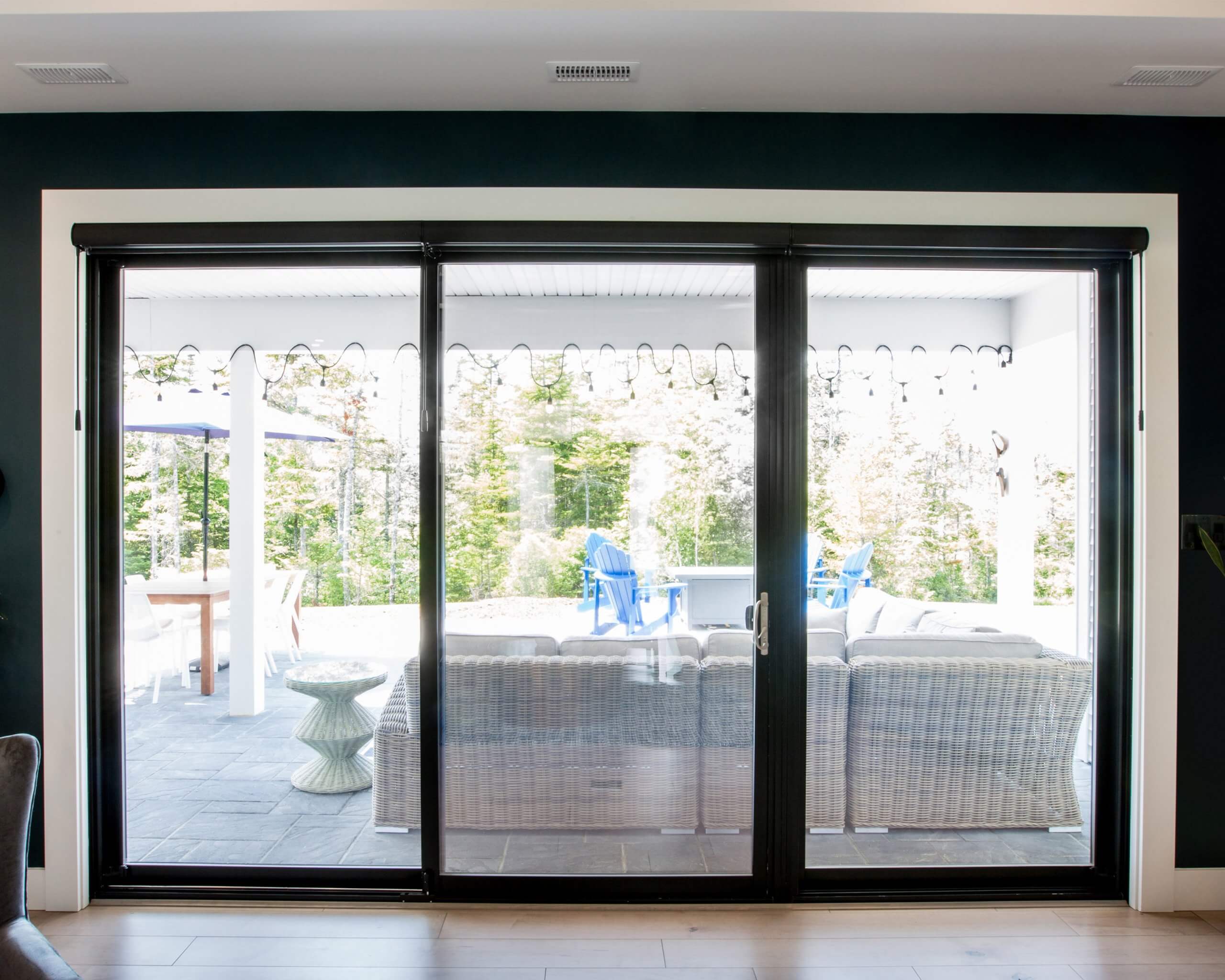
Photo courtesy of Kohltech

Photo courtesy of Kento
Arsenault adds that black windows remain a popular choice in 2024, “albeit growth, while still growing, has moderated.”
“Black windows have been dominating the window market in recent years, and whilst still popular, we are beginning to see a rise in demand for softer neutral tones such as slate grey, brown and beige,” Lindsay says. Ply Gem’s new Design Series windows, she says, feature classic white vinyl or a Fusion Colour Wrap laminate interior – with both surfaces being offered in a range of neutral colours.
Colour continues to be provided by three main means: paint, aluminum cladding and acrylic wrap, with the latter having the longest lifespan, Nadiger notes. All Weather Windows provides acrylic wrap finishing with a 20-year warranty against fading, chalking and scratching.
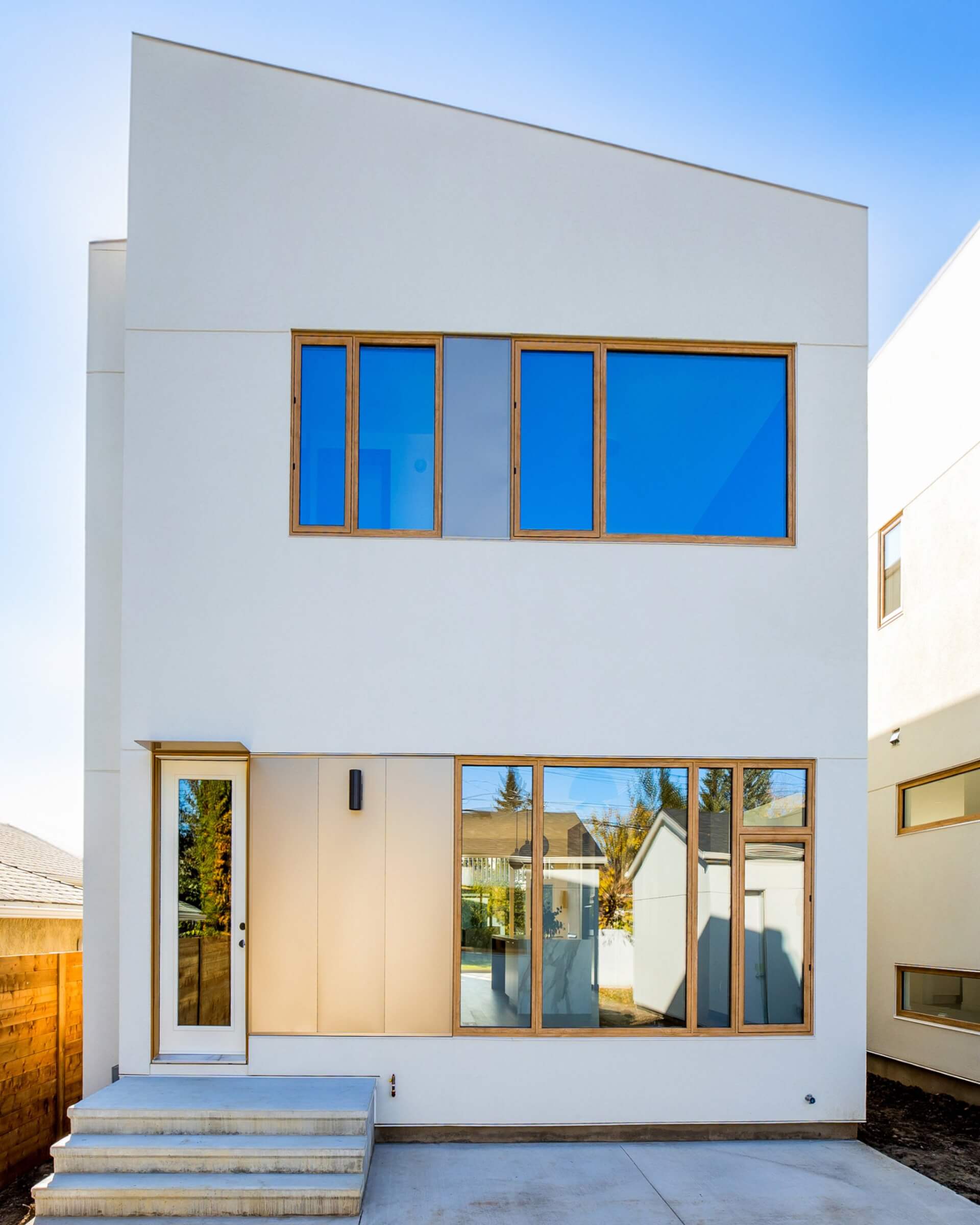
Photo courtesy of All Weather Windows
While there may not be new material choices or technologies for contractors to consider at this time, Nadiger does point to the recent availability of bird glass in her company’s offerings for commercial builders and some homeowners. These windows feature a unique UV pattern on the glass that birds can see but which is generally invisible to homeowners. “Bird glass requirements are coming into effect in the U.S. commercial market, and I suspect that will follow in the Canadian market. While not required in residential windows, it is an option that is available.”

Photo courtesy of Frank W & D
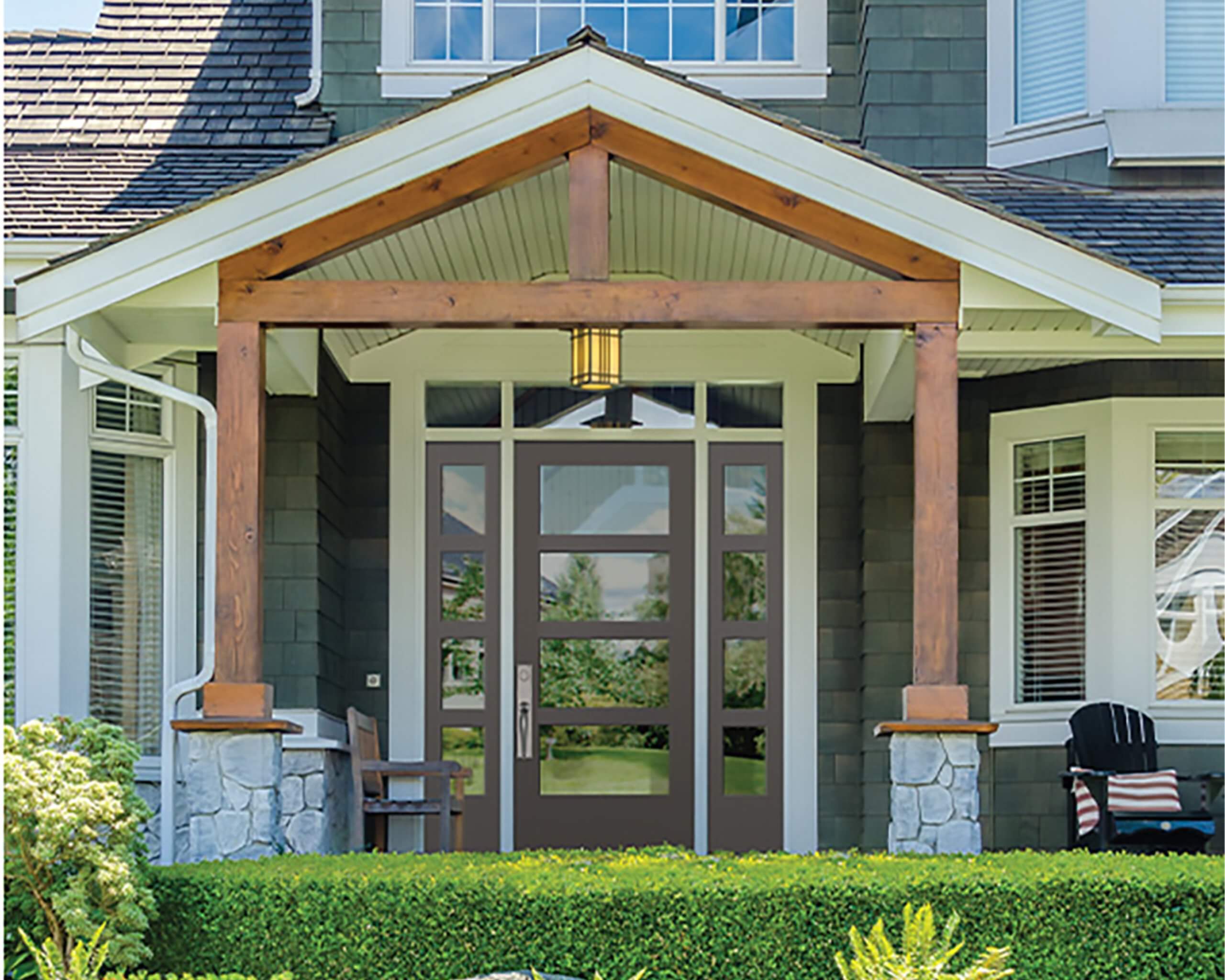
Photo courtesy of Ply Gem
Lindsay notes that with exterior colours being more prevalent, the manufacturing process used in applying colour should be an area of consideration. “We are seeing an increase in companies opting for a paint application on vinyl windows. For many, this is leading to costly service implications including immediate surface damage during transit and installation, and lack of adhesion, fading, and peeling down the road.” She too suggests a bonded film or wrap, like her company’s Fusion Colour Wrap, to be resistant to abrasions, chipping and peeling.
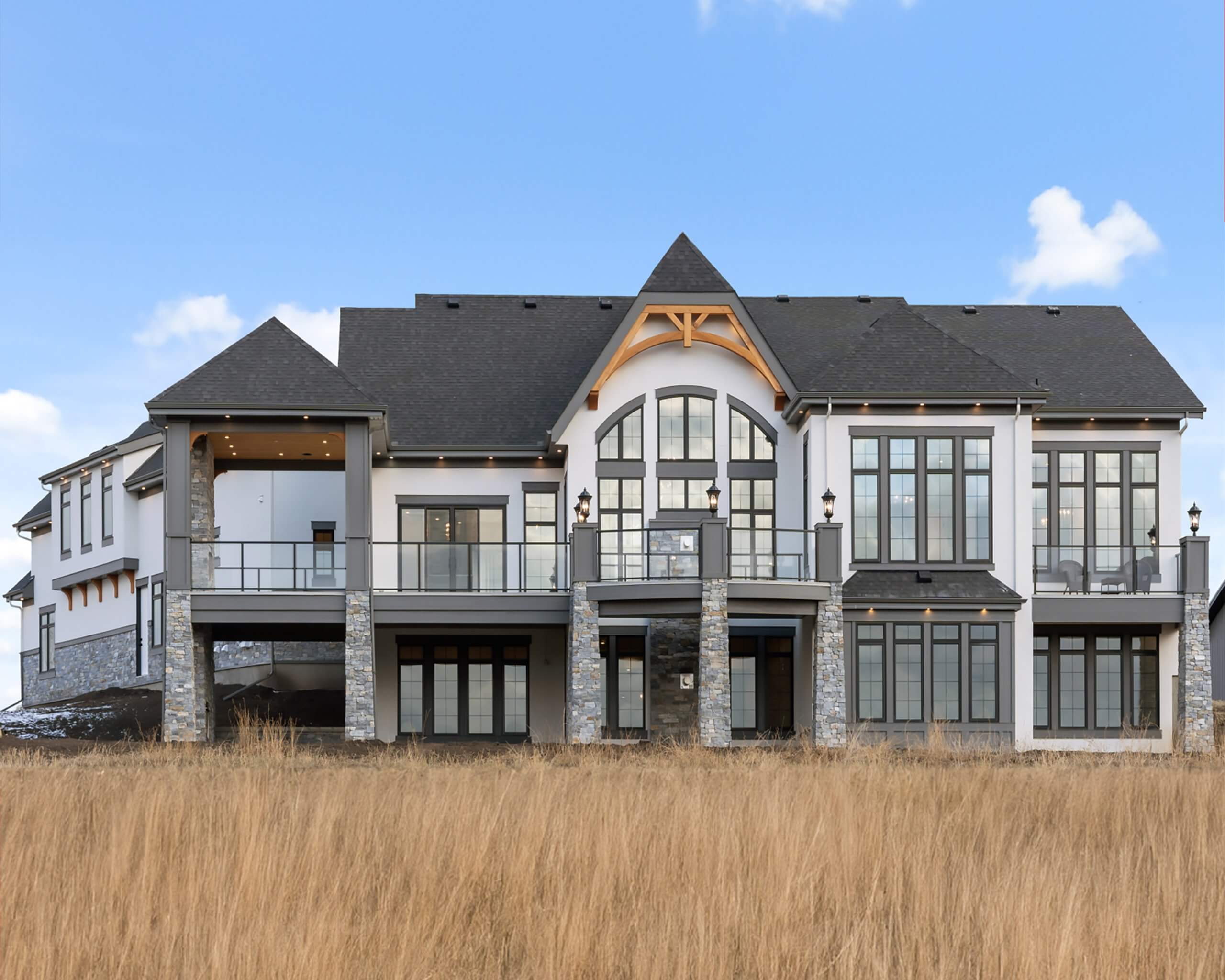
Photo courtesy of Ply Gem
Of course, performance is crucial to windows, and that demands proper installation. “Installers and contractors must ensure windows are installed properly and are sealed so they drain appropriately. We see installation challenges that cause windows to leak, and the homeowner believes it’s the fault of the window.”
As energy efficiency continues to become important, contractors must consider another important factor in their window installations: weight. “Larger and triple-glazed windows and doors are considerably heavier and provide many logistical challenges in getting to the job site and installing,” Arsenault says. “Sometimes larger windows need to be glazed on site or have panels installed on site so the frames can be more easily handled.”
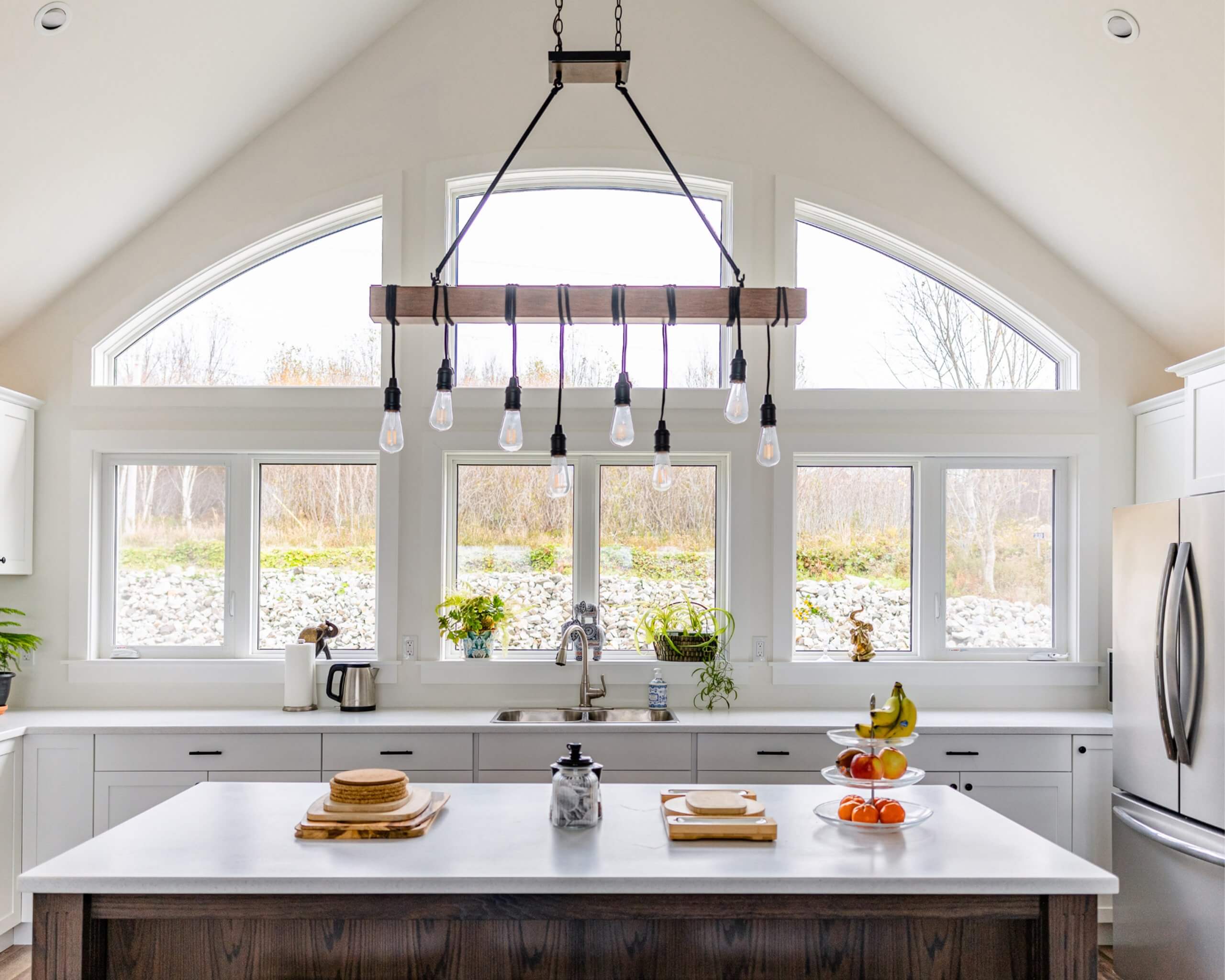
Photo courtesy of Kohltech
A view of the out back
Trends toward more natural light and larger openings are just as prominent for rear or decks, as well as the ongoing movement towards blending indoor and outdoor experiences.
“Rear and deck doors are continuing to get larger,” Arsenault says. “Multipaneled sliding doors are very popular, and heavier doors require more robust hardware.”
He adds, “Energy performance (triple-glazed) continues to be requested increasingly as high heating costs are more quickly recovered with improved energy performance investment.”
Ward is excited about his company’s newest fibreglass rear door solution: sliding patio doors with glass panels as large as 6’ by 10’. Thanks to the strength of the solution, the windows can include tri-pane glazing and the whole system can be built to include up to four panels (for a total width of 24’.)
“The nice thing is you can use only two panels for a 12’ wide rear door, instead of the usual three,” Ward says. “People are looking for more visible light and less material. This gives them an option they haven’t had in the past. It’s all part of our new fibreglass line.”
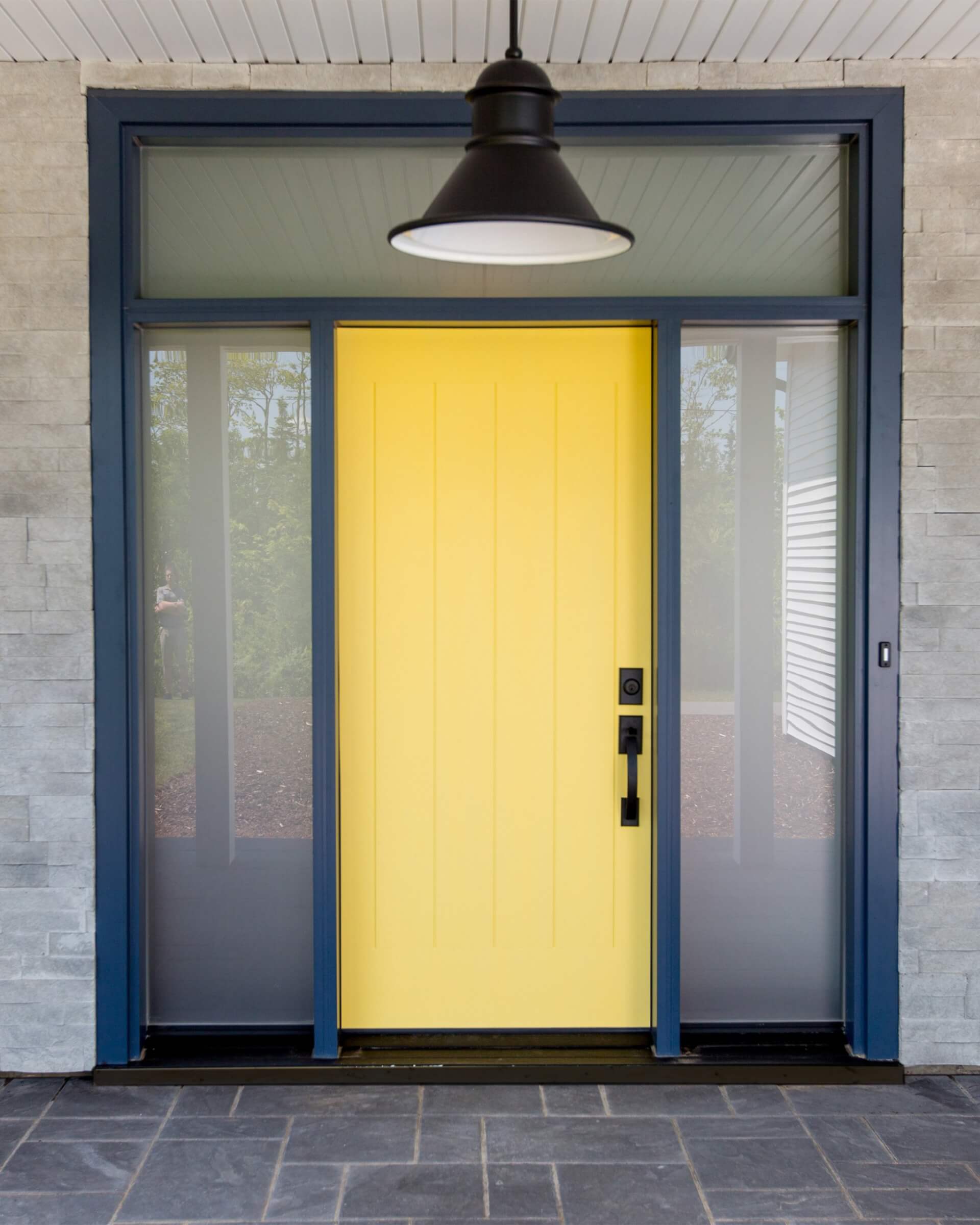
Photo courtesy of Kohltech
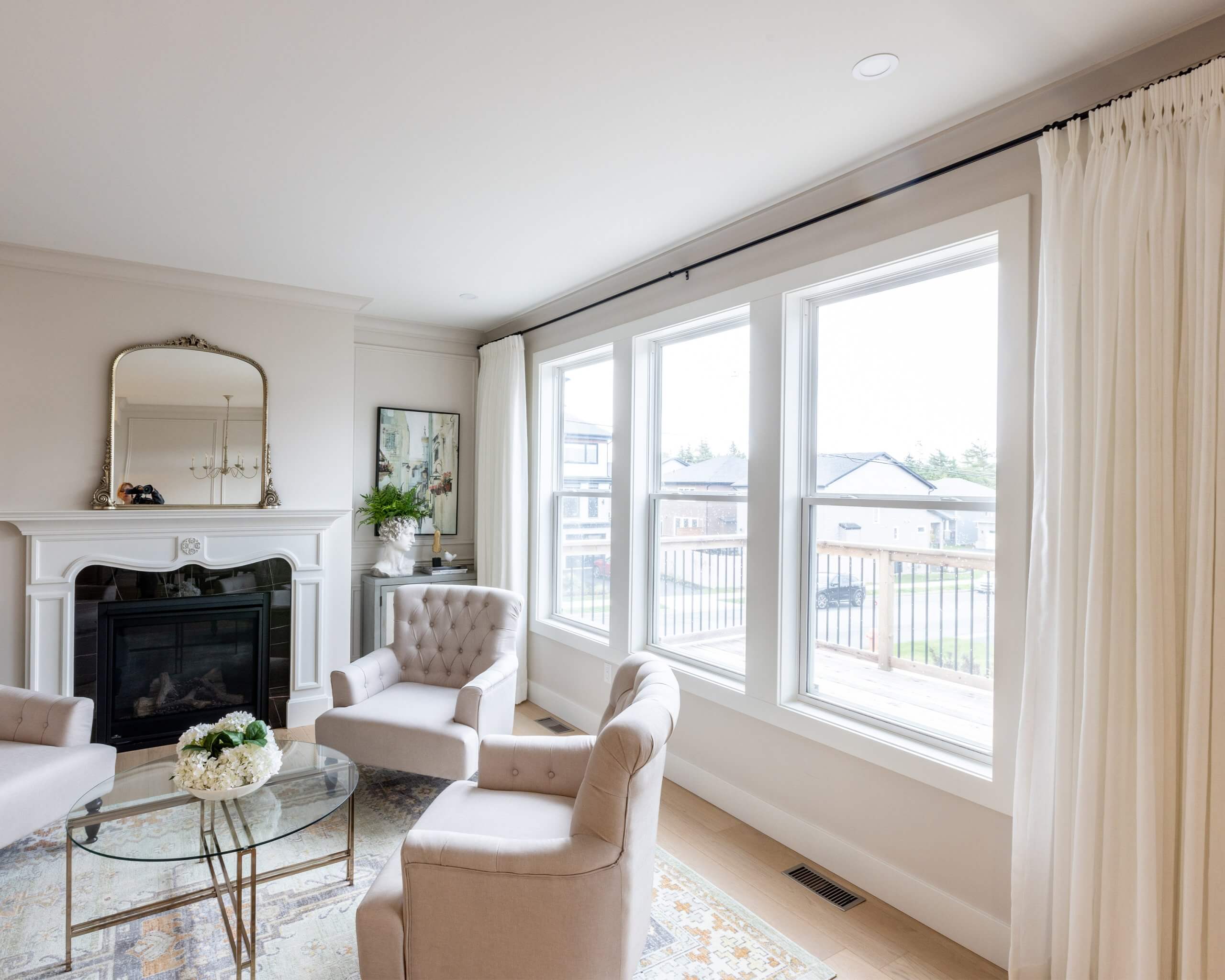
Photo courtesy of Kohltech
Performance, codes and the environment
Shifting codes to meet environmental expectations is an ongoing challenge for contractors across all building categories and windows and exterior doors are no exception.
“The window and door industry has seen a significant influx of code changes in recent months, with more to follow,” Lindsay says, adding that her company’s Senior Compliance Managers position on the Fenestration Association of BC and FenCan helps the company stay ahead of the curve with these everchanging requirements, an advantage they share in monthly webinars and Q&As with dealers, architects and builders.

Photo courtesy of Ply Gem
“Recent building code changes emphasize energy efficiency and safety, impacting window and door specifications. Contractors should stay updated on code revisions to ensure compliance and advise clients accordingly,” DeCola says.
And while recent building code changes haven’t affected windows much, Nadiger notes the 2025 changes will have more of an impact. “However, that code will likely launch late and then it still takes time for provinces to adopt it.”

Photo courtesy of All Weather Windows
She says the adoption of B.C. step code 4 which impacts that province’s energy requirements has meant national and multi-regional window companies have had to take steps to meet those efficiency requirements with three low-e coatings. “This new heat system will also meet the 2025 building code. The downside is that the visible light transmittance drops compared with two low-e coatings.”
She stresses that “Contractors should continue to look for a window partner that is reliable, stands behind their product and is knowledgeable about the upcoming changes to code. This ensures they are providing the right products to their customers to meet codes.”
Contractors must be aware that upcoming code changes around performance also create structural requirements, Ward points out. “In the most recent codes, they are starting to talk about different wall assemblies.” With assemblies leaving more room for insulation, or incorporating external insulated cladding, manufacturers like Durabuilt must innovate and redevelop their trim and accessories as well as make sure products have a jam depth that works with new standards.
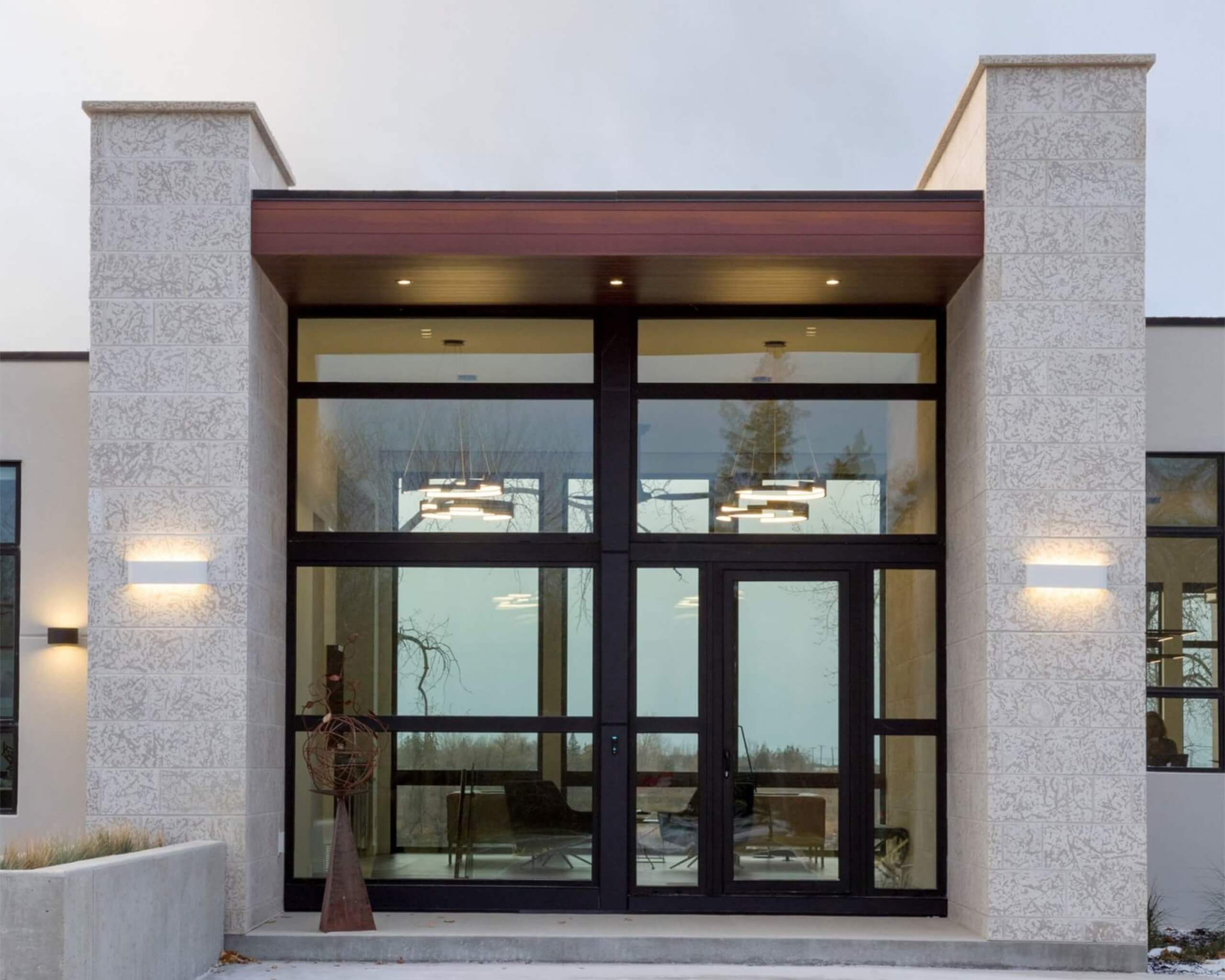
Photo courtesy of Durabuilt
Of course, energy performance is not the only priority of regional governments and code-makers. “Building codes are a mixed bag across the country,” Arsenault says. “While national codes are focusing on improved energy performance, municipal and provincial governments have varying levels of endorsement as the focus is more on increased housing inventory and that can be perceived to be in conflict with increased regulation.”
With energy and performance requirements ever on the rise, manufacturers are continuously innovating to help contractors, builders and homeowners to meet them.
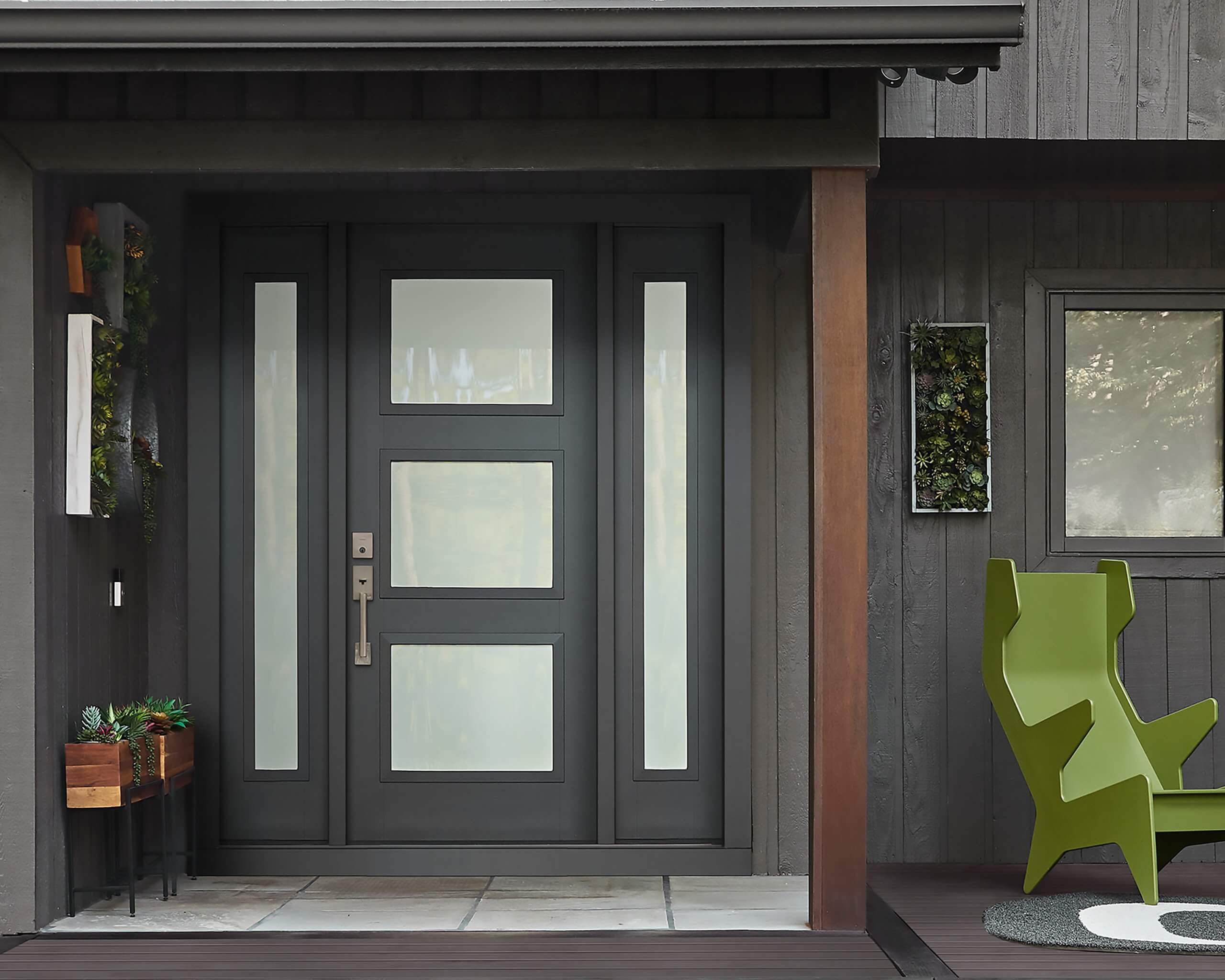
Photo courtesy of JELD-WEN
“Energy Star is, rightfully so, becoming much more aggressive,” McKay says. “By 2025, they are moving to a maximum U-factor of 1.2, or a minimum ER (Energy Rating) of 34. By 2030, the maximum U-factor will be 0.8 or a minimum ER of 44. This is in line with various government rebate programs.”
“One good thing with our 8500 series is that it exceeds the 2025 Energy Star standards today. Unfortunately, for most current window systems it is going to be very difficult to meet the requirements to come.”
Increasing understanding of changing code requirements for consumers and builders isn’t the exclusive job of contractors, everyone in the industry plays a role.
“Contractors need to be more aware of the codes and what products pass and don’t pass,” Kent says. “Some of the LBM stores aren’t even aware of them. There’s a lot of education and training that needs to be done at wholesale, as well as the retail.”
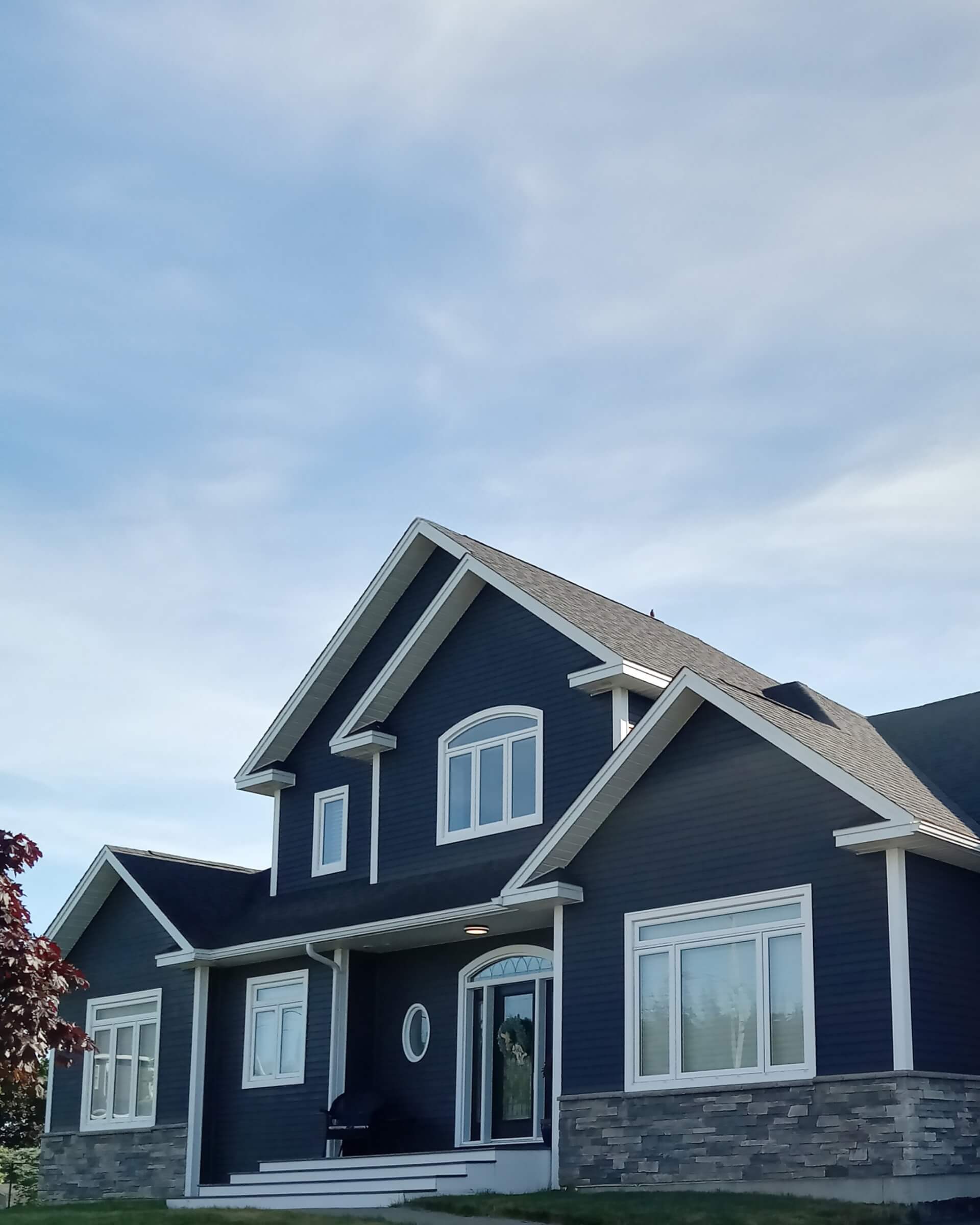
Photo courtesy of Kento
Some final advice
As always, knowledge is the key to a quality job — knowledge of the energy requirements builders must meet, of the options available to homeowners and, of course, proper installation to achieve performance.
“Window installers and contractors in 2024 should prioritize customer education on energy efficiency and security features. Offering knowledge, customization options, and showcasing eco-friendly solutions can enhance customer satisfaction,” DeCola advises contractors. “Contractors in the fenestrations space should be aware of the growing demand for sustainable practices and energy-efficient designs.”
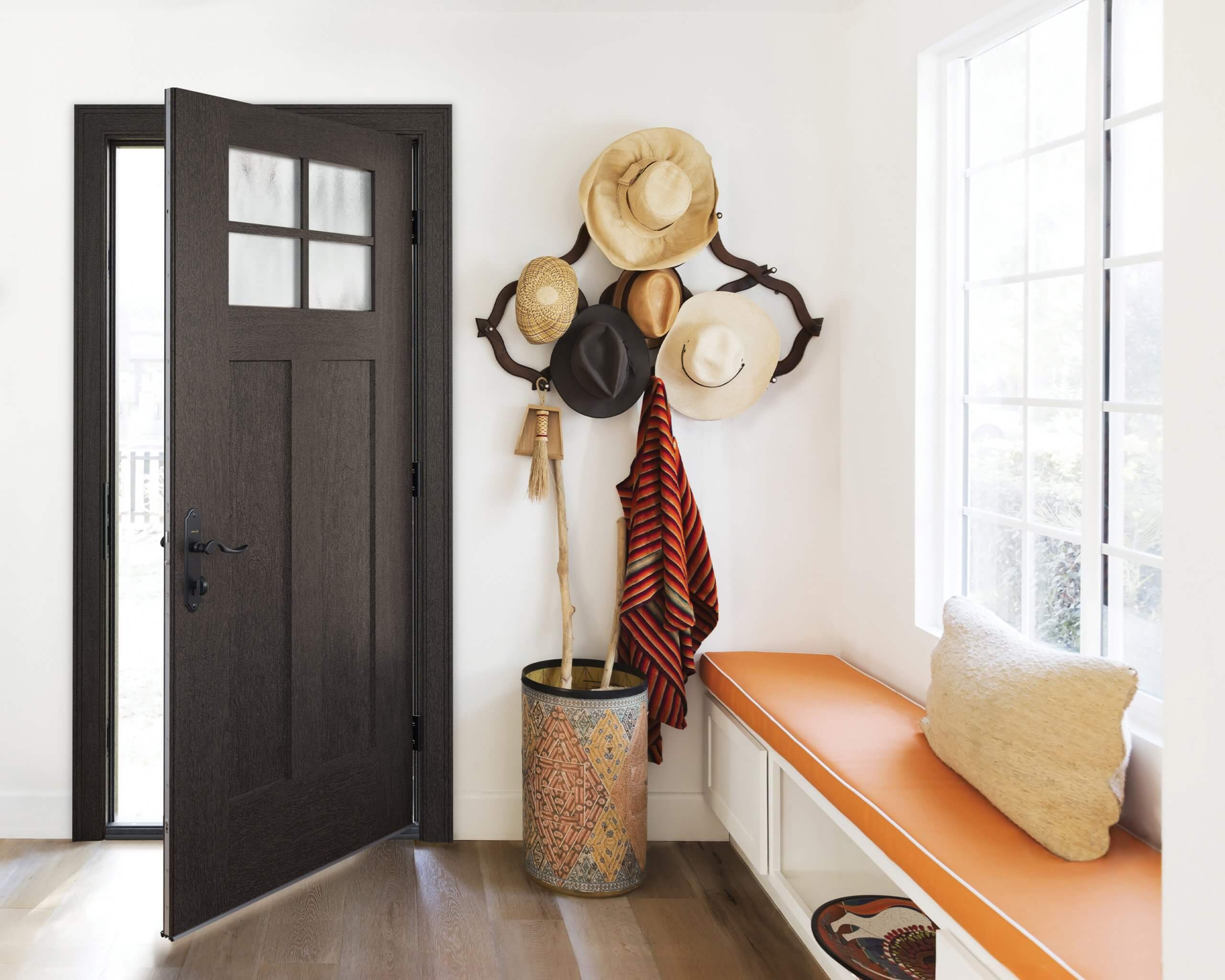
Photo courtesy of Frank W & D
And, of course, doing the job right, and selecting the right system has never been more important.
“As we move towards the new norm of building greener and more sustainable homes, it is increasingly important to not only choose the correct specification of window but also the best installation techniques for the application,” Lindsay says. “A product can only perform at its best if installed correctly — when in doubt, a good rule of thumb is to ask for guidance on product suitability and detailed installation instructions.”
McKay suggests contractors need to help consumers understand the value and the total cost of ownership around windows and door systems.
“The one thing that I have been really banging the drum on is more about placing a higher value on performance over cost,” he says. “The reason I say that is if you put in a higher value on a higher quality product, it’s going to last you significantly longer and amortized over its lifetime, ultimately providing more value.” —
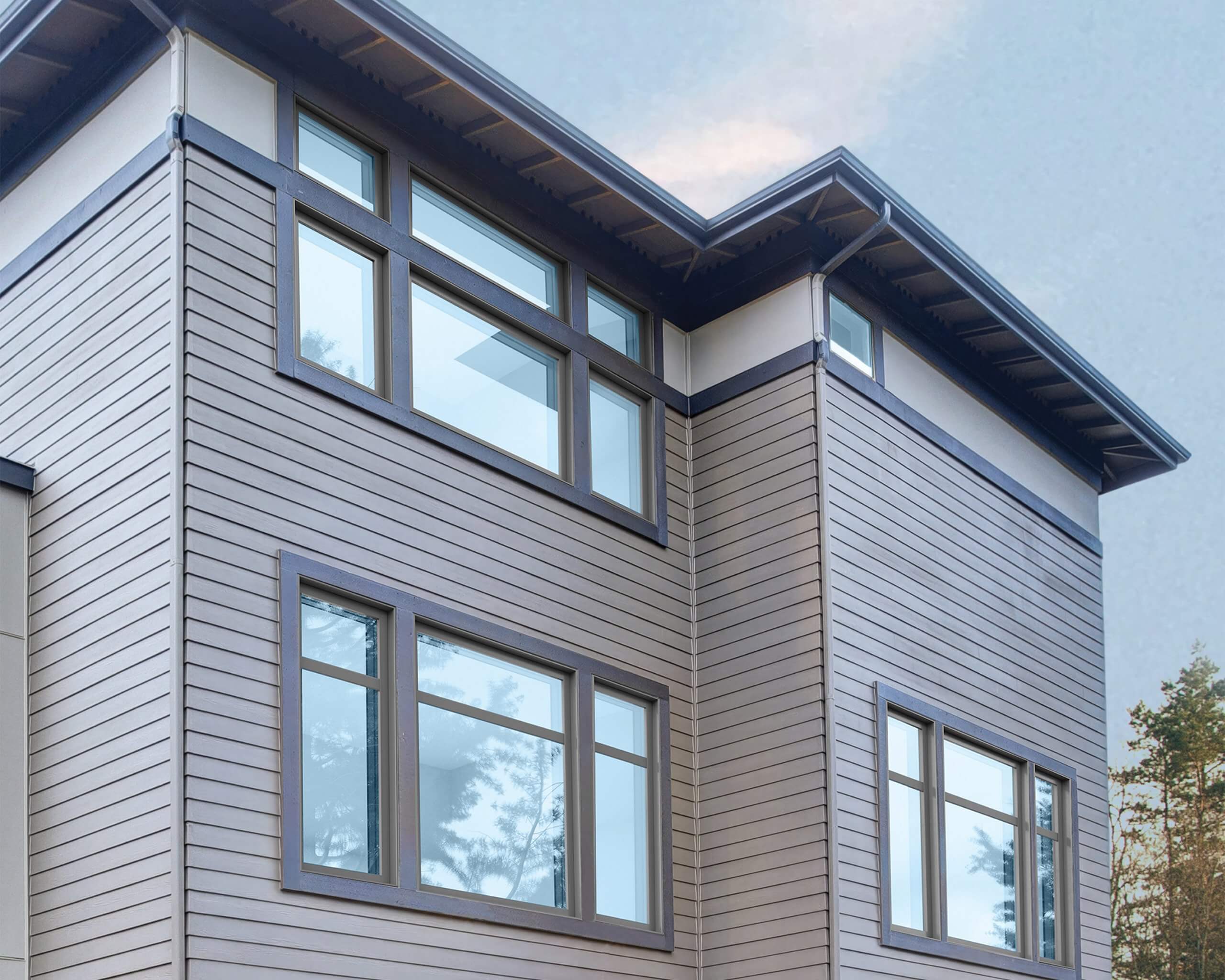
Photo courtesy of JELD-WEN
